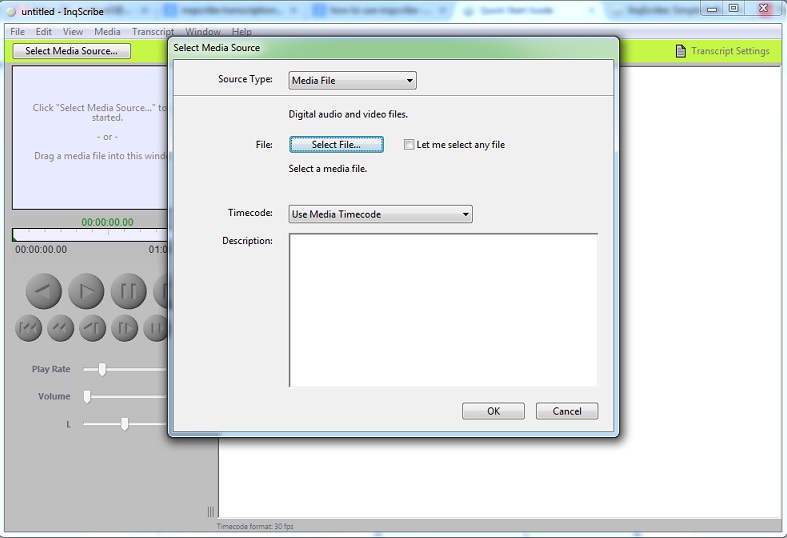

- #Inqscribe manual frame rate software
- #Inqscribe manual frame rate code
- #Inqscribe manual frame rate license
At this stage, CLAN had had a longer history of use and development and was more stable, particularly on Macintoshes.

Linguists who were using ELAN were reporting the usual sorts of bugs found with new software, many of which have since been remedied. In 2002, most field linguists were working only with audio, using a combination of Transcriber and Shoebox to annotate recordings. ELAN was an annotation tool being developed by the MPI (Nijmegen) specifically for the documentation of endangered languages. At that time, Transcriber did not offer an option to transcribe video files, leaving CLAN and ELAN as the main choices.
#Inqscribe manual frame rate software
Finally, it was important that the software we chose would run with few problems on a Macintosh computer and had developers who were committed to the performance of the program on this platform.
#Inqscribe manual frame rate license
2 Licensed under Creative Commons Attribution Non-Commercial No Derivative License E-ISSNĢ CLAN Review 108 sophisticated combinatory searches and statistical analyses.

It may include the transcription itself, as well as ethnographic information, the physical context, and paralinguistic and extralinguistic cues such as prosody and gesture.
#Inqscribe manual frame rate code
We also wanted to be able to code our transcripts for various features in order to perform relatively 1 Here I follow Bird and Liberman 2001 and use the term annotation to refer to any information associated with a communicative event. Choosing a language annotation tool for the ACLA project was not a straightforward exercise, partly because our wish list outstripped the functionality of any software available when our project started in We required a tool that would allow us to transcribe and annotate video recordings, and link the subsequent transcripts with the video files. In this respect, our project is situated within both the fields of child language studies and language documentation. Although the traditional languages of the communities are relatively well described, little work has been done on the contact languages, and, consequently, the documentation of these languages has formed one arm of the ACLA project. My own work has been based in Kalkaringi, a Gurindji community in northern Australia, where a mixed language, Gurindji Kriol, has become the main language of the community, with Gurindji now spoken only by older people (McConvell and Meakins 2005). The language environments range from Lajamanu in Central Australia, where Warlpiri people continue to speak their traditional language in conjunction with a mixed language, Light Warlpiri (O Shannessy 2005), to Yakanarra in the Kimberley region of Western Australia, where Walmajarri people are now predominantly speakers of an English-lexifier creole language, Kriol. Four Aboriginal communities have been involved in the project, each demonstrating a different degree of language shift and loss. We have been documenting the types of language environments in which children acquire language and the implications for language change. The aim of the ACLA project has been to investigate the kind of language input children receive in remote Australian Aboriginal communities. This project is based at the University of Melbourne, but also has ties with the University of Sydney and the Australian Institute of Aboriginal and Torres Strait Islander Studies (AIATSIS). I began using CLAN while a research assistant with the Aboriginal Child Language project (ACLA 2 ). It must be noted that any criticisms I have of the software are not intended as commentary on its adequacy as a tool for studies of language acquisition or conversation analysis in well-documented languages. Drawing on personal experience, I discuss the pros and cons of this software with respect to its use as a tool for the documentation of endangered languages.

However, since it was not developed specifically for language documentation, it lacks a number of essential features. It is also a potentially useful tool for the documentation of endangered languages, and offers some functions that are not provided by more popular software, such as ELAN. 1 (June 2007), pp Computerized Language Analysis (CLAN) from The CHILDES Project Reviewed by FELICITY MEAKINS, University of Melbourne CLAN is an annotation 1 and statistical analysis tool that has a large community of users in the fields of first language acquisition and conversation analysis.


 0 kommentar(er)
0 kommentar(er)
